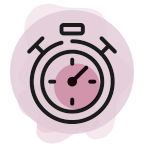Dealing with SADness
by Hugo Bravo

What is seasonal affective disorder?
Do you feel your mood and behavior change with the seasons? As the days get colder and shorter in the winter months, people may start to feel down or even depressed, only to brighten up as spring brings back warmer weather and longer days. These mood changes can affect someone’s life in a serious way, changing how they think, work, and interact with others. This is a type of depression called seasonal affective disorder (SAD). Most cases of SAD begin in late fall or winter and end in spring or summer; this is known as winter-pattern SAD. Although less common, summer-pattern SAD begins in the warmer months and can have different, but still damaging, effects. Symptoms of major depression may be present in either situation.
How is SAD treated?
Only a trusted health care provider or mental health specialist can determine if someone’s symptoms meet the criteria for SAD. They will check to see if other mental disorders are the cause, such as attention-deficit/hyperactivity disorder (ADHD) or bipolar disorder. They can also investigate outside factors that can increase the risk of SAD, such as family history or living in parts of the country like New England, where winter days are shorter.

Try talk therapy. Cognitive behavioral therapy (CBT) teaches patients how to cope with difficult situations, such as depression, loss, or eating disorders. For SAD, the therapy focuses on replacing negative thoughts related to the winter months with more positive ones. CBT also uses a process called behavioral activation: By identifying and planning pleasant, engaging winter activities—holiday parties, indoor games and hobbies, sports events—people can fight off the disinterest and isolation they might be experiencing.

Check your serotonin. Serotonin is a chemical in our bodies that can influence our feelings, memory, happiness, and much more. SAD, like other types of depression, is associated with disturbances or imbalances in our serotonin levels. Antidepressant medications called selective serotonin reuptake inhibitors (SSRIs) work by increasing serotonin levels in our brains, which can improve our emotions, sleep patterns, and overall mood. However, all medications can have side effects and should only be taken under the direct recommendation of a health care professional.

Light one up. Light therapy treatment involves a daily procedure of sitting in front of a bright light box for 30 minutes to an hour, usually in the morning, to make up for the lack of daylight hours in shorter winter and fall days. These specialized light boxes are 20 times stronger than regular indoor lights and can filter out damaging UV rays. They have been used for the treatment of SAD since the 1980s.

Start early. Unlike other types of depression, SAD can be predicted based on seasonal changes. Doctors may recommend starting CBT, light therapy, or medication ahead of the winter months to hopefully minimize its effects. A temporary change of scenery, such as vacationing in a sunnier, warmer climate during winter, can also help people deal with SAD.
Signs of SAD to watch for
Some symptoms of major depression:
- Feeling depressed most of the day, nearly every day.
- Losing interest in activities you once enjoyed.
- Having low energy or difficulty concentrating.
- Feelings of hopelessness, and in extreme cases, thoughts about death or suicide.*
Winter-pattern SAD symptoms:
- Oversleeping (hypersomnia).
- Weight gain from overeating, particularly sugars or carbohydrates.
- Social withdrawal (wishing to “hibernate” through the season).
Summer-pattern SAD symptoms:
- Trouble sleeping (insomnia).
- Poor appetite, leading to weight loss.
- Irritability, agitation, or anxiety.
*If you or someone you know is struggling or in crisis, help is available. Call or text 988 or chat 988lifeline.org. For TTY users: Use your preferred relay service or dial 711 then 988.
Source: The National Institute of Mental Health

